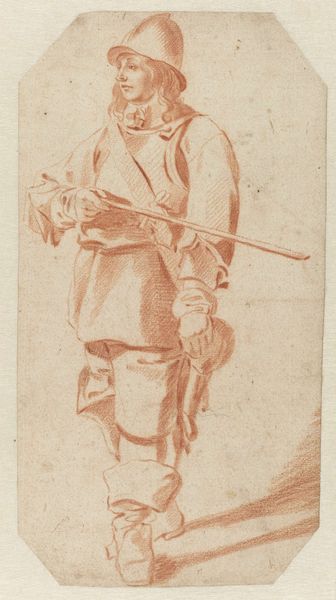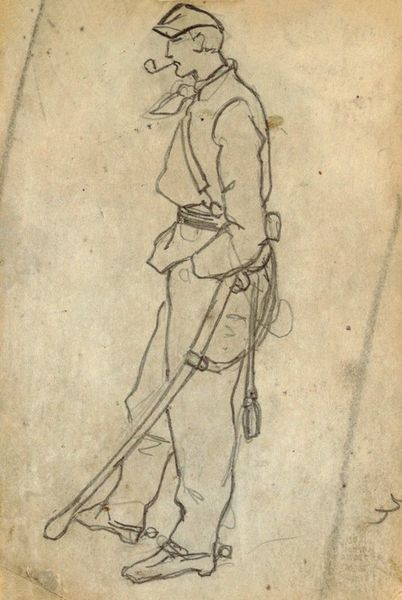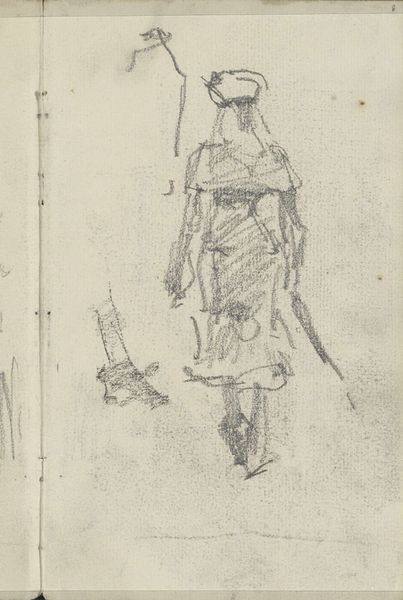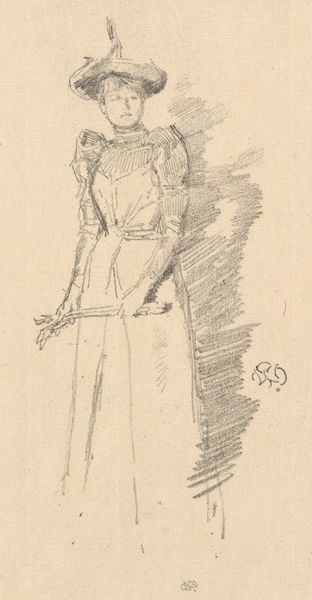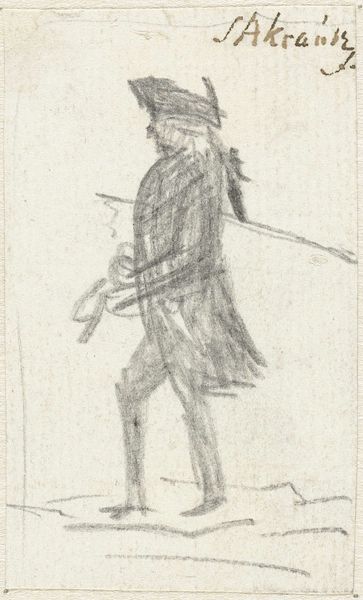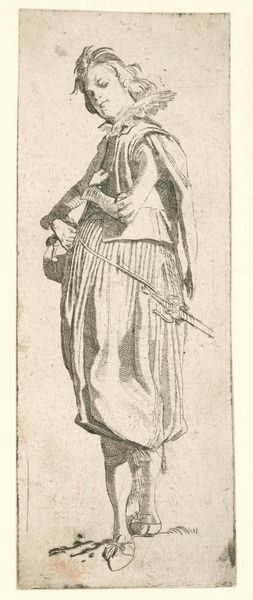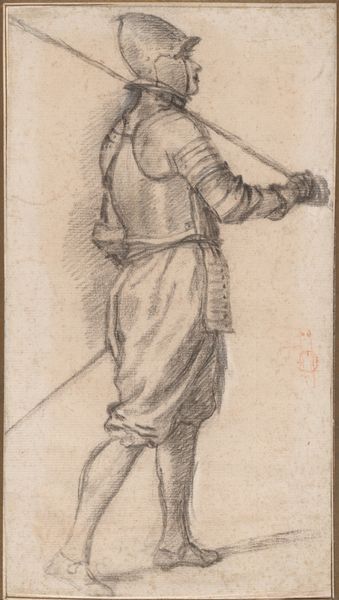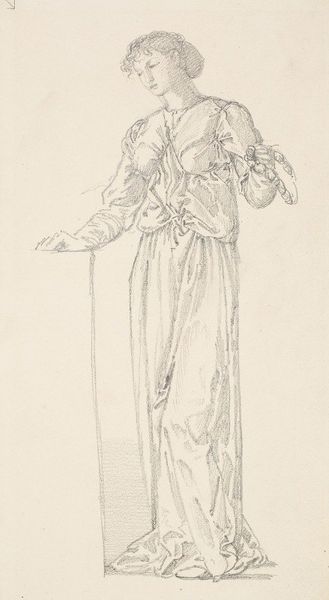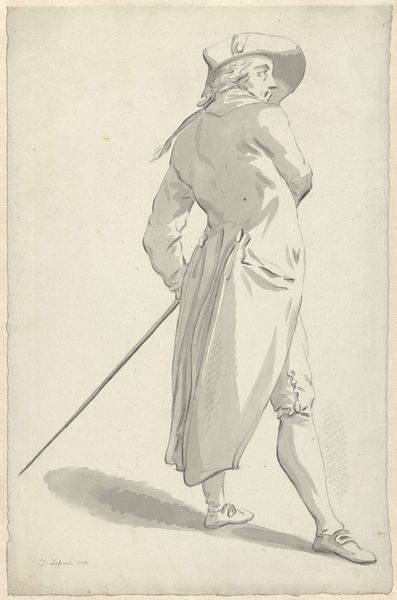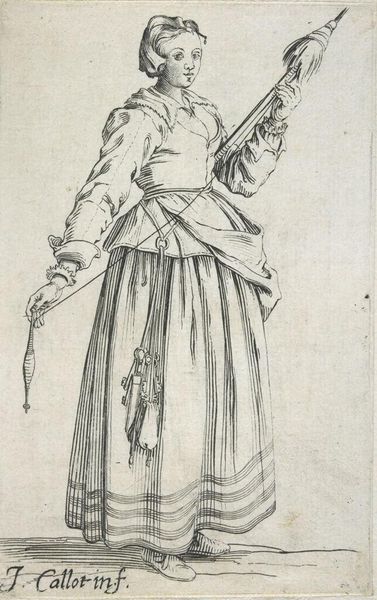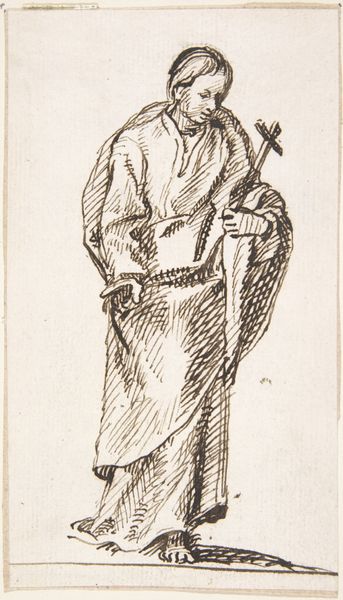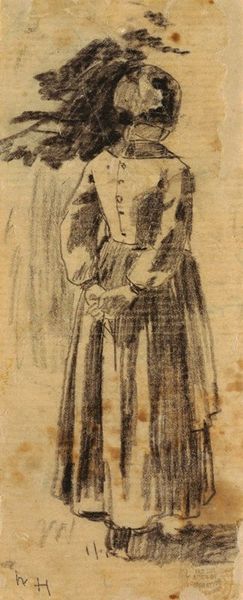
drawing, pencil
#
drawing
#
landscape
#
figuration
#
pencil
#
academic-art
Copyright: Public Domain: Artvee
Curator: Before us is "Homme en costume ecclésiastique portant une échelle," a pencil drawing created in 1857 by Pierre Puvis de Chavannes. Editor: There's a humble stoicism in this piece. The muted palette contributes to this contemplative atmosphere, and the cross-hatching gives form to his cloak. But tell me, is he weighed down by something beyond that ladder? Curator: Interesting. I see a social commentary on the burden of religious institutions. The ecclesiastic dress combined with the ladder might represent the structures—hierarchical climb—that perpetuate oppressive power dynamics. The bowed posture seems to speak to societal expectations placed on this figure. Editor: The ladder is so simple. Visually, it strikes me as a pathway—to what? Ascent is often framed positively, but perhaps this suggests a more complicated narrative of responsibility. In religious iconography, ascending is associated with revelations. The figure is obscuring his face suggesting doubt in the path he must follow. Curator: That resonates. Consider the artist's context; the mid-19th century was rife with socio-political shifts questioning religious authority. I read the bowed head and burden as symbols of an institution in conflict with modernization, possibly echoing feminist arguments prevalent around dismantling patriarchal establishments. Editor: You see, my first thought went immediately to Saint Joseph, the patron saint of workers. He is seen often with the tools of his carpentry or walking with an obscured gaze into his destiny as Jesus’s father. The ladder would act in conjunction with the tunic as the cross, and ladder act in a way that references crucifixion. I see here almost the human capacity for the experience of martyrdom through simple daily duties. Curator: So, we’re left contemplating the tension between individual burden and structural change. The artist evokes multiple interpretations—all speaking to our roles in navigating the landscapes around our societal foundations. Editor: Agreed. Ultimately, this piece compels us to consider how symbols impact human emotion within our communal historical narrative.
Comments
No comments
Be the first to comment and join the conversation on the ultimate creative platform.
